
Missouri wine refers to wine made from grapes grown in Missouri. German immigrants in the early-to-mid-19th century founded the wine industry in Missouri, resulting in its wine corridor being called the Missouri "Rhineland". Later Italian immigrants also entered wine production. In the mid-1880s, more wine was produced by volume in Missouri than in any other state. Before prohibition, Missouri was the second-largest wine-producing state in the nation. Missouri had the first area recognized as a federally designated American Viticultural Area with the Augusta AVA acknowledged on June 20, 1980. There are now four AVAs in Missouri. In 2017 there were 125 wineries operating in the state of Missouri, up from 92 in 2009.
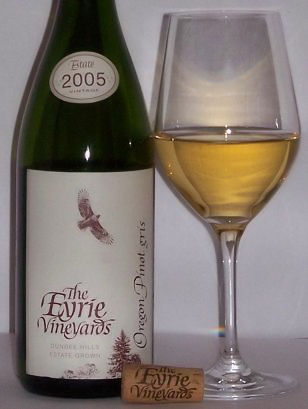
Wine has been produced in the United States since the 1500s, with the first widespread production beginning in New Mexico in 1628. Today, wine production is undertaken in all fifty states, with California producing 84 percent of all US wine. The North American continent is home to several native species of grape, including Vitis labrusca, Vitis riparia, Vitis rotundifolia, and Vitis vulpina, but the wine-making industry is based almost entirely on the cultivation of the European Vitis vinifera, which was introduced by European settlers. With more than 1,100,000 acres (4,500 km2) under vine, the United States is the fourth-largest wine producing country in the world, after Italy, Spain, and France.

Illinois wine refers to any wine that is made from grapes grown in the U.S. state of Illinois. In 2006, Shawnee Hills, in southern Illinois, was named the state's first American Viticultural Area. As of 2008, there were 79 wineries in Illinois, utilizing approximately 1,100 acres (4.5 km2) of vines.

Washington wine is a wine produced from grape varieties grown in the U.S. state of Washington. Washington ranks second in the United States in the production of wine. By 2017, the state had over 55,000 acres (220 km2) of vineyards, a harvest of 229,000 short tons (208,000 t) of grapes, and exports going to over 40 countries around the world from the 940+ wineries located in the state. While there are some viticultural activities in the cooler, wetter western half of the state, the majority (99.9%) of wine grape production takes place in the shrub-steppe eastern half. The rain shadow of the Cascade Range leaves the Columbia River Basin with around 8 inches (200 mm) of annual rain fall, making irrigation and water rights of paramount interest to the Washington wine industry. Viticulture in the state is also influenced by long sunlight hours and consistent temperatures.
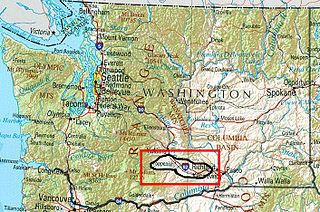
The Yakima Valley AVA was the first American Viticultural Area established within Washington state, gaining the recognition in 1983. Part of the larger Columbia Valley AVA, Yakima Valley AVA is home to more than 18,000 acres (73 km2) of vineyards, giving the area the largest concentration of wineries and vineyards in the state. The most widely planted varietals in the area are Chardonnay, Riesling, Merlot, Cabernet Sauvignon, Pinot gris, and Syrah. Nearly 40% of Washington state yearly wine production is made from Yakima Valley grapes. In addition to grapes, the Yakima Valley is also home to several fruit orchards growing apples, cherries, nectarines, peaches, pears and plums. Around the town of Zillah, there is the Zillah Fruit Loop driving tour through the area's orchards and vineyards. The area is also home to nearly 80% of the US hop production.

New York wine refers to wine made from grapes grown in the U.S. state of New York. New York ranks third in grape production by volume after California and Washington. 83% of New York's grape area is Vitis labrusca varieties. The rest is split almost equally between Vitis vinifera and French hybrids.

The production of wine in New Jersey has increased significantly in the last thirty years with the opening of new wineries. Beginning in 1981, the state legislature relaxed Prohibition-era restrictions and crafted new laws to facilitate the growth of the industry and provide new opportunities for winery licenses. Today, New Jersey wineries are crafting wines that have earned recognition for their quality from critics, industry leaders, and in national and international competitions. As of 2019, New Jersey currently has 51 licensed and operating wineries with several more prospective wineries in various stages of development.
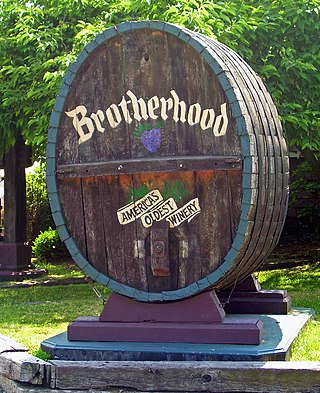
The history of American wine began when the first Europeans explored parts of North America, which they called Vinland because of the profusion of grape vines found there. However, European settlers, namely the Spanish, would later discover that the wine made from the various native grapes, had flavors which were unfamiliar and which they did not like. This led to repeated efforts to grow familiar Vitis vinifera varieties. The first vines of Vitis vinifera origin came up through New Spain (Mexico) and were planted in Senecu in 1629, which is near the present day town of San Antonio, New Mexico.

New Mexico has a long history of wine production, within American wine, especially along the Rio Grande, from its capital Santa Fe, the city of Albuquerque with its surrounding metropolitan area, and in valleys like the Mesilla and the Mimbres River valleys. In 1629, Franciscan friar García de Zúñiga and a Capuchín friar named Antonio de Arteaga planted the first wine grapes in Santa Fe de Nuevo México, in what would become the modern Middle Rio Grande Valley AVA. Today, wineries exist in the aforementioned Middle Rio Grande Valley, as well as the Mesilla Valley AVA and the Mimbres Valley AVA.
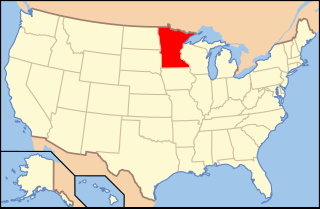
Minnesota wine refers to wine made from grapes grown in the U.S. state of Minnesota. Minnesota is part of the largest American Viticultural Area (AVA), the Upper Mississippi River Valley AVA, which includes southwest Wisconsin, southeast Minnesota, northeast Iowa, and northwest Illinois. The state also has a smaller designated American Viticultural Areas, the Alexandria Lakes AVA. Minnesota is a very cold climate for viticulture and many grape varieties require protection from the winter weather by being buried under soil for the season. Minnesota is home to extensive research on cold-hardy French hybrid and other grape varieties.

Iowa wine refers to wine manufactured in the U.S. state of Iowa. Iowa presents many challenges to viticulture including very warm summer days that can promote fungal vine diseases, and extremely cold winter nights that can kill many varieties of grapevines. Most commercial viticulture in Iowa focuses on French hybrid and native American grape varieties, with relatively few plantings of Vitis vinifera grapes. Many Iowa wineries also import grapes and juice from other states and countries in order to produce wine varietals otherwise not possible due to Iowa's harsh winter months that will not permit such grapes to survive. Iowa is home to 100 commercial wineries and more than 300 vineyards covering 1,200+ acres. Northeastern Iowa is included in the Upper Mississippi Valley AVA while the western part of the state is in the new AVA designation named Loess Hills.

Mississippi wine refers to wine made from grapes grown in the U.S. state of Mississippi. The hot and humid climate of Mississippi makes it very difficult to cultivate vitis vinifera or French hybrid grapes. The three commercial wineries in Mississippi focus almost entirely on the Muscadine grape, a variety also used for non-alcoholic grape juices, jams, and jellies. Most of the Mississippi Delta AVA, a designated American Viticultural Area, lies within the state boundaries of Mississippi.
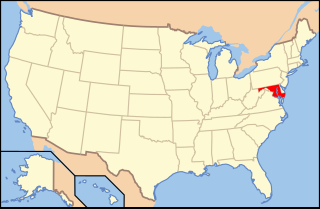
Maryland wine is wine made in the U.S. state of Maryland. The industry has grown rapidly since the first winery in Maryland, Boordy Vineyards, opened in 1945. It is estimated that the industry contributes $50 million annually to the Maryland economy.

California wine production has a rich viticulture history since 1680 when Spanish Jesuit missionaries planted Vitis vinifera vines native to the Mediterranean region in their established missions to produce wine for religious services. In the 1770s, Spanish missionaries continued the practice under the direction of the Father Junípero Serra who planted California's first vineyard at Mission San Juan Capistrano.
Leona Valley AVA is an American Viticulture Area (AVA) in northeastern Los Angeles County, California. It is located in Leona Valley within the Sierra Pelona Mountains of Southern California.

The El Dorado AVA is an American Viticultural Area located in El Dorado County, California, United States. Wine grape growers in the region produce a large diversity of varietals, notable varietals are Zinfandel, Barbera, Cabernet Sauvignon, Merlot and Petite Sirah and there are significant plantings of Rhône varietals. Located in the foothills of the Sierra Nevada mountains, vineyards are found primarily at elevations between 600 feet (183 m) and 3,500 feet (1,067 m) above sea level and some of the historic and revered vineyards are planted above 2,000 feet (610 m) elevation. The region benefits from the cool breezes that come off the mountains and push hot air off the vines and down to the valley. The soils of the region are magma based with high levels of acidity.

The Hermann AVA is an American Viticultural Area located in Gasconade County, Missouri, and entirely contained within the larger Ozark Mountain AVA. The wine appellation is located on the southern side of the Missouri River near the town of Hermann, about halfway between St. Louis and Jefferson City. The AVA covers the northernmost hills of the Ozark Plateau with many of the 200 acres of vineyards planted along hillside locations. As of 2007, seven wineries were producing wine in appellation, including Missouri's largest winery, Stone Hill Winery.

The Seneca Lake AVA is an American Viticultural Area around Seneca Lake in Upstate New York. The wine appellation is entirely contained within the larger Finger Lakes AVA, and includes portions of Ontario, Schuyler, Seneca, and Yates counties. Seneca Lake is a glacial lake about 35 miles (56 km) long and up to 600 feet (180 m) deep. The lake does not freeze in winter, and acts as a giant heat storage unit for the vineyards surrounding the lake, extending the growing season. The most commercially important grape variety in the region is Riesling, although a wide variety of Vitis vinifera and French hybrid grapes are grown.

The Upper Mississippi River Valley AVA is an American Viticultural Area covering 29,914 square miles located along the Upper Mississippi River and its tributaries in northwest Illinois, northeast Iowa, southeast Minnesota and southwest Wisconsin. Certified by the United States Department of the Treasury's Alcohol and Tobacco Tax and Trade Bureau on July 22, 2009, it is the largest AVA in the United States. The AVA encompasses an area 50 times larger than the Bordeaux wine regions of France.

Ventimiglia Vineyard is a winery in Wantage Township in Sussex County, New Jersey. The vineyard was first planted in 2002, and opened to the public in 2008. Ventimiglia has 5 acres of grapes under cultivation, and produces 1,000 cases of wine per year. The winery is named after the family that owns it.



















